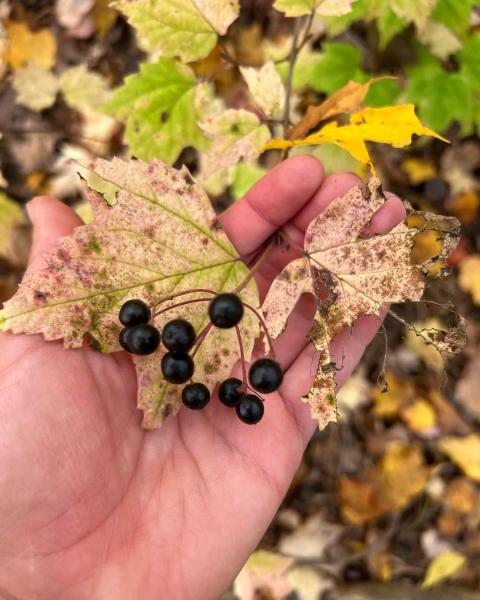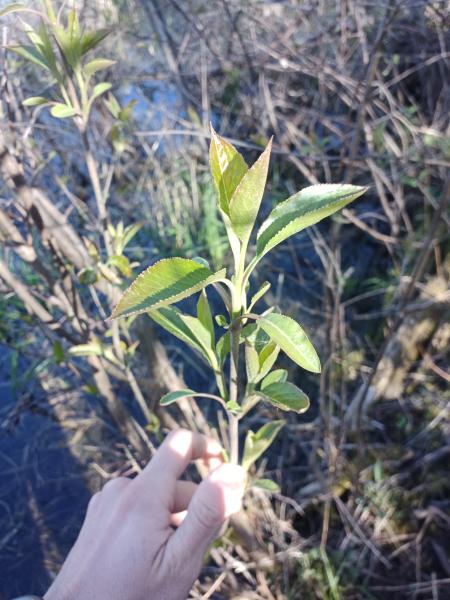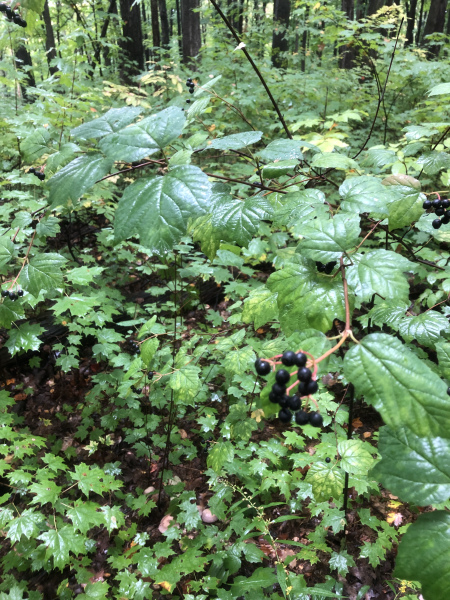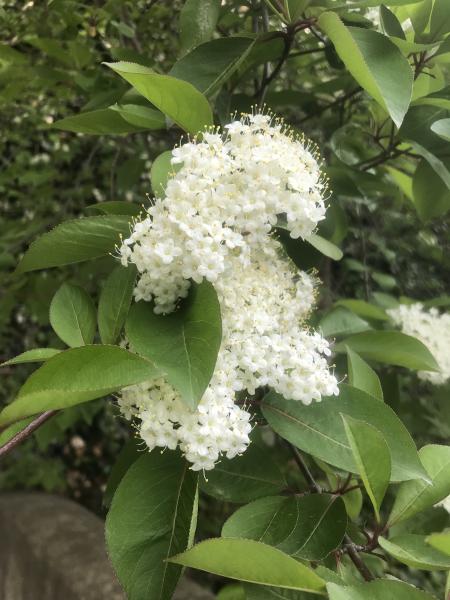Mapleleaf Viburnum, Nannyberry, Highbush Cranberry
Viburnum acerifolium L., Viburnum lentago L., Viburnum opulus subsp. americanum Ait.
Viburnaceae
Image
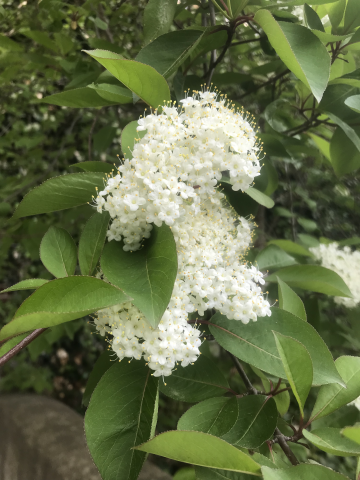
Nannyberry flowers, Photo credit: J. Amyotte 2022
Names and Their Meanings
Mapleleaf Viburnum - Viburnum acerifolium
Kanienʼkéha
wá:ya yonya'táhkwa “it's a useable jam berry”
French
Viorne à feuilles d'érable
Nannyberry - Viburnum lentago
Kanienʼkéha
kaya (?) tará:kwi
Anishinaabemowin
(check this)
French
Viorne flexibleViorne à feuilles d'érable
Highbush Cranberry - Viburnum opulus subsp. americanum
Kanienʼkéha
tó:kware (same word as cranberry)
Anishinaabemowin
aniibiiminagaawanzh, aniipiminaatik
French
americanum: Viorne trilobée
Mapleleaf Viburnum
Description
Frederick Wilkerson Waugh recorded many kinds of uses for Viburnum trees and shrubs at Six Nations in 1912, and among Anishinaabe in 1916. At Six Nations, his teachers told him that Highbush Cranberry grew by the swamps, and were used for food, jams & jellies, and deserts. In Anishinaabe communities, he was told that Highbush Cranberry was a kind of “physic,” having a laxative effect by making a tea of bark scraped from young twigs.
Conservation Status
In Ontario, New York S5 (Secure) and Québec S3 (Vulnerable)
Nannyberry
Conservation Status
In Ontario, New York S5 (Secure) and Québec S3 (Vulnerable)
Highbush Cranberry
Conservation Status
In Ontario S5 (Secure), New York and Québec S4 (Apparently Secure)


